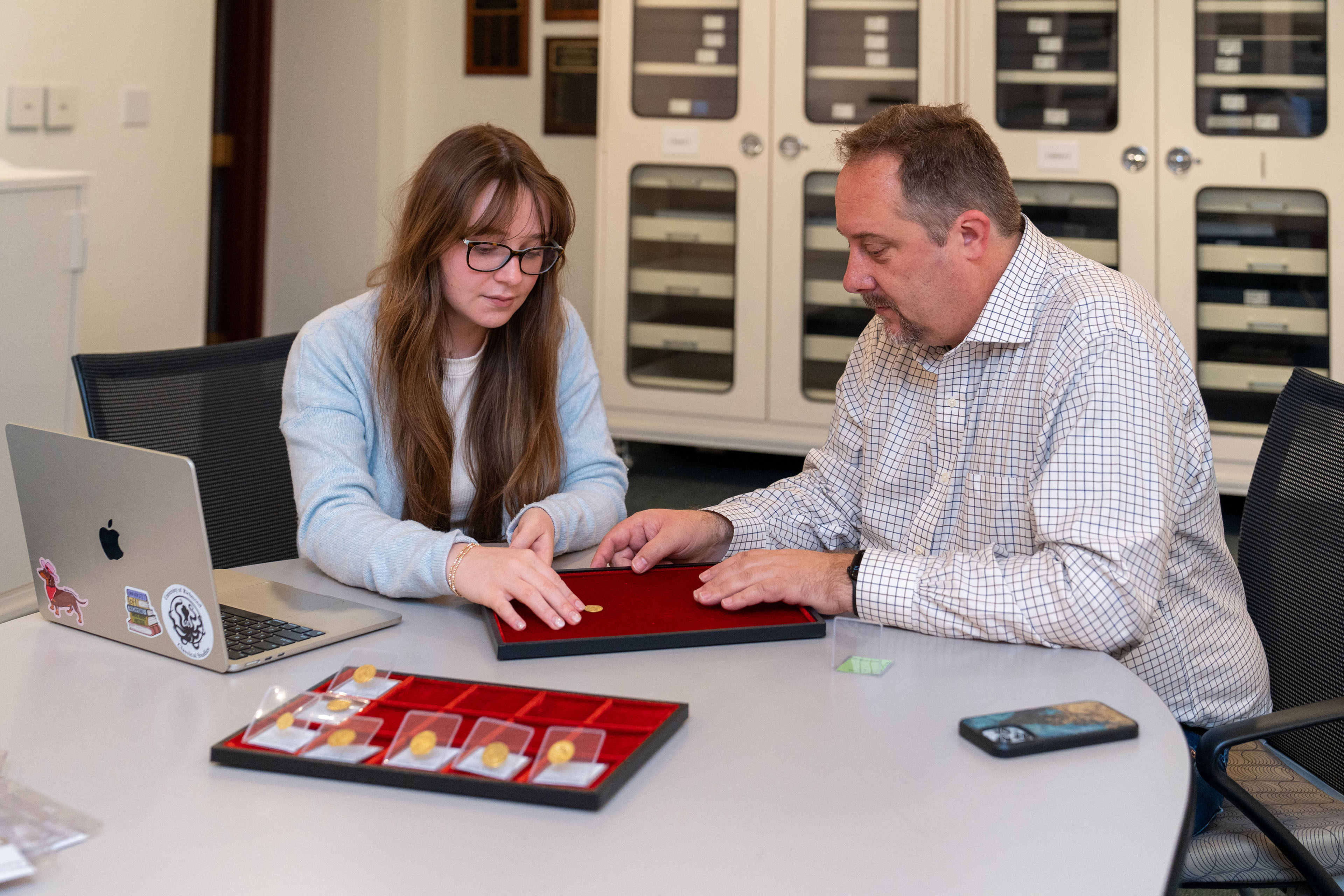Finding gold at a Richmond museum
University News
A collection of about 60 historic coins will soon take center stage at the newly redesigned Lora Robins Gallery, located within the Boatwright Memorial Library.
The coin display is one of several new features in the updated Lora Robins Gallery, which showcases hundreds of minerals, rocks, and fossils. The Gallery, which reopens Aug. 28 following a major renovation, will also have a new classroom space, making thousands of objects in the permanent collection more accessible for teaching and learning.
The University Museums are responsible for a collection of over 15,000 ancient and medieval coins. The coins included in this new display were donated by two collectors and entered the collection in the mid-1970s and 80s, said David Hershey, the museums’ collection manager and curator of the exhibit. In recent years, the coins had only been used by classes.
“The coins have seen history. They are history,” Hershey said. “They have survived wars, been buried for centuries, and now they serve as a launching point for the stories of their world.”
The exhibit focuses on key eras in Byzantine Empire history, from the reigns of emperors Anastasius and Justinian the Great to the rise of Islam and the Crusades.
For history and classics students like junior Charlotte Dixon, working with the coins has been a career-shaping experience. “Researching the coins solidified that this is something I’m really passionate about,” she said.
“I am hoping with time to be able to get more of the unknown coins catalogued, but as they say, Rome wasn’t built in a day.”

One of Dixon’s favorites is a tremissis, a fingertip-sized gold coin dating from 450-457 A.D. that depicts Pulcheria, an Eastern Roman empress. Although this coin is not part of the exhibit, Hershey said it is one of the first times in 200 years that a woman has been featured on a coin. (See photo above.)
The Byzantines produced at least as much bronze coinage as the Romans produced in silver coins – an estimated 150 million coins a year, Hershey said, adding that gold coins were rarer and generally better preserved.
The display tells the Byzantine story through words, maps, and coins.
Many coins have still not been catalogued. “There are coins that will be much more complicated because of their condition and the amount of time they are going to require to identify and research,” said Hershey, who will also present the University coin collection at the Virginia Numismatic Convention in September.
“I am hoping with time to be able to get more of the unknown coins catalogued,” he said. “But as they say, Rome wasn’t built in a day.”

